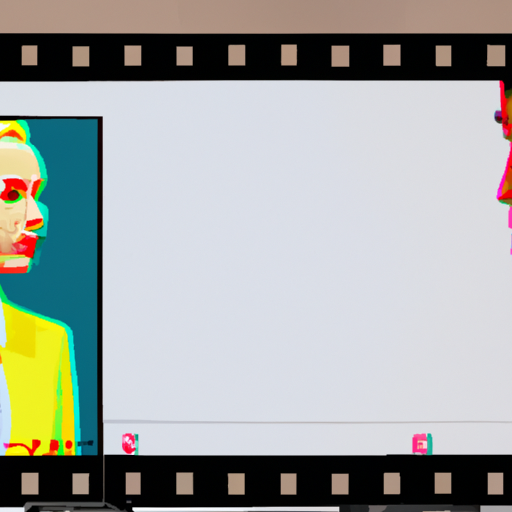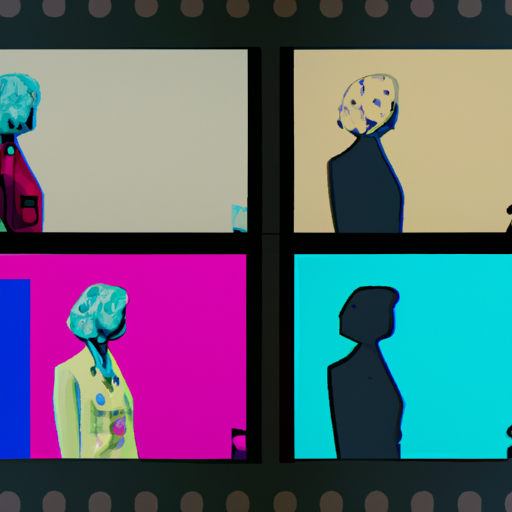
-
Table of Contents
- Visual Narratives: Storyboarding in Motion Design
- What is Storyboarding?
- The Importance of Storyboarding in Motion Design
- Effective Storyboarding Techniques
- 1. Define the Objective
- 2. Sketch the Key Moments
- 3. Use Visual Cues
- 4. Consider Timing and Duration
- 5. Incorporate Sound and Dialogue
- Case Studies: Effective Storyboarding in Motion Design
- Case Study 1: Nike “Unlimited You”
- Case Study 2: Google “Year in Search”
- Conclusion
Visual Narratives: Storyboarding in Motion Design

Visual narratives play a crucial role in the world of motion design. They allow designers to communicate complex ideas, emotions, and stories through a combination of visuals, motion, and sound. One of the key tools used in the creation of visual narratives is storyboarding. In this article, we will explore the importance of storyboarding in motion design, its benefits, and how it can be effectively utilized to create compelling visual narratives.
What is Storyboarding?
Storyboarding is a technique used in various creative fields, including film, animation, and motion design. It involves creating a sequence of visual panels or sketches that represent the key moments and shots of a story. These panels are arranged in a chronological order to depict the flow of the narrative.
Storyboarding serves as a blueprint for the final visual narrative, allowing designers to plan and visualize the structure, composition, and pacing of their work. It helps in organizing ideas, refining the story, and ensuring a coherent and engaging visual experience for the audience.
The Importance of Storyboarding in Motion Design
Storyboarding plays a crucial role in motion design as it helps designers to:
- Visualize the Narrative: Storyboarding allows designers to visualize the narrative and plan the sequence of events. It helps in determining the key moments, transitions, and overall flow of the story.
- Refine the Story: By creating a storyboard, designers can identify any gaps or inconsistencies in the narrative. They can refine the story, add or remove elements, and ensure that the message is effectively conveyed.
- Collaborate and Communicate: Storyboards serve as a visual communication tool that helps designers collaborate with clients, directors, and other team members. It allows everyone involved to have a clear understanding of the intended visual narrative.
- Save Time and Resources: Storyboarding helps in identifying potential issues or challenges early in the design process. It allows designers to make necessary adjustments before investing time and resources in the production phase.
Effective Storyboarding Techniques
Creating an effective storyboard requires careful planning and attention to detail. Here are some techniques that can help designers create compelling visual narratives:
1. Define the Objective
Before starting the storyboard, it is essential to define the objective of the visual narrative. What message or emotion do you want to convey? Who is your target audience? Answering these questions will help in creating a focused and impactful storyboard.
2. Sketch the Key Moments
Identify the key moments or shots that are crucial for telling the story. Sketch these moments in separate panels, focusing on composition, framing, and visual elements. Consider the pacing and rhythm of the narrative to create a dynamic and engaging storyboard.
3. Use Visual Cues
Visual cues such as arrows, lines, and annotations can be used to indicate camera movements, transitions, and other visual effects. These cues help in conveying the intended motion and flow of the narrative.
4. Consider Timing and Duration
Storyboarding is not just about visualizing the story but also about planning the timing and duration of each shot. Consider the pace at which the narrative should unfold and allocate appropriate time for each panel.
5. Incorporate Sound and Dialogue
Sound and dialogue play a significant role in motion design. Consider incorporating sound cues or dialogue in the storyboard to enhance the storytelling. This will help in creating a more immersive and engaging visual narrative.
Case Studies: Effective Storyboarding in Motion Design
Let’s explore some case studies that demonstrate the effective use of storyboarding in motion design:
Case Study 1: Nike “Unlimited You”
In the Nike “Unlimited You” campaign, storyboarding played a crucial role in creating a visually stunning and emotionally engaging narrative. The storyboard helped in planning the sequence of shots, transitions, and camera movements to convey the message of pushing one’s limits.
The storyboard for the campaign consisted of panels that depicted athletes in various sports, showcasing their determination and perseverance. The use of visual cues, such as arrows and lines, helped in indicating the dynamic camera movements and transitions between shots.
Case Study 2: Google “Year in Search”
The Google “Year in Search” videos are a series of annual recap videos that highlight the most searched topics of the year. Storyboarding played a crucial role in creating a cohesive and emotionally impactful narrative for these videos.
The storyboard for each video consisted of panels that represented the key moments and events of the year. The use of visual cues, such as annotations and arrows, helped in indicating the transitions between different topics. The timing and duration of each panel were carefully planned to create a rhythmic and engaging visual narrative.
Conclusion
Storyboarding is an essential tool in motion design that helps designers create compelling visual narratives. It allows designers to visualize the narrative, refine the story, collaborate and communicate effectively, and save time and resources. By following effective storyboarding techniques and studying successful case studies, designers can create visually stunning and emotionally engaging motion design projects.
Whether it’s a commercial, a film, or an animated video, storyboarding lays the foundation for a successful visual narrative. So, the next time you embark on a motion design project, remember the power of storyboarding in creating impactful and memorable visual experiences.
